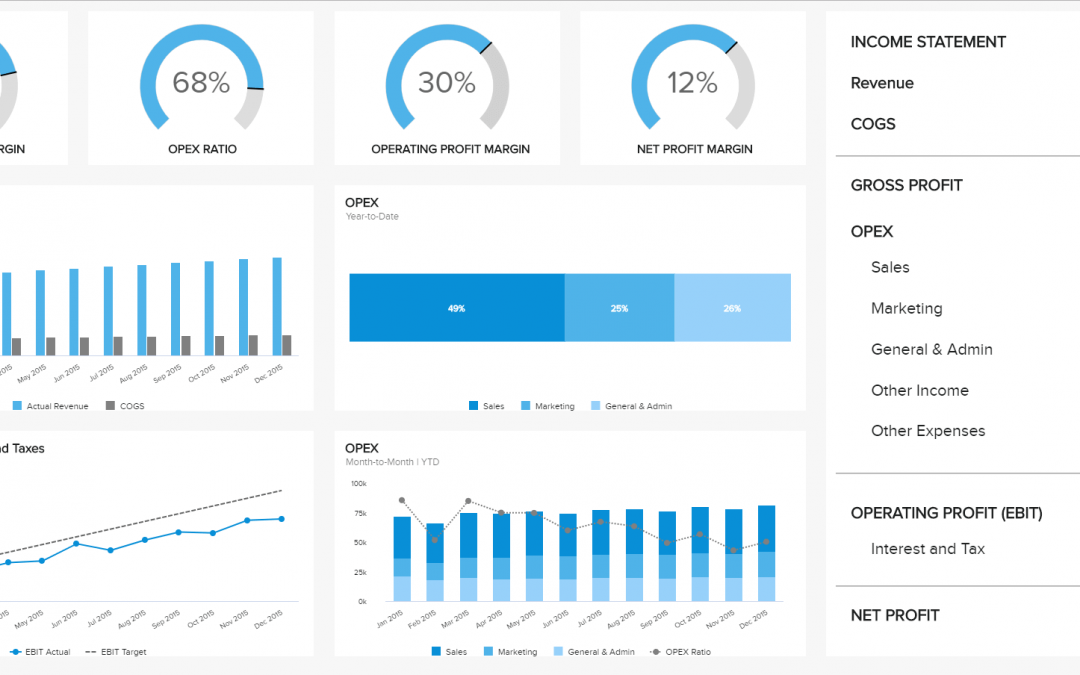As your company starts to grow you may find yourself dreading the financials and leaning toward a “hands off” approach. This may work in the short term (or if your controller/cfo is extremely plugged in) but if you’re a smaller business you’re likely using an external accountant.
Understanding your own metrics is key to the health of your business. In order to ensure your financials are working for you, you need to be “hands on” enough to establish the circumstantial rules and visual financials (KPI’s / Budgets) necessary to make the right business decisions:
What drives your company? What KPI’s (Key Performance Indexes) inform your decisions as a CEO, President, Manager and Team Member?
Even if (or maybe especially if) you’re using an external accountant you need to be educated enough to tell them what you want to see and how you want the data to be displayed.
Modernization and Hiring for the ‘Right Fit’
Transitioning from “I’ll let the experts handle this” to “I want to be more involved to see where we can improve” isn’t as easy as just adjusting your mindset — you need to get your whole team on board. And if you’re stuck in the past then so is your entire department. Finding ways to save time, money, increase cash flow and have a tighter financial reporting system, requires the kind of people who want this as well.
Unfortunately, there’s quite a bit of protectionism in the accounting industry and many don’t want you meddling with their systems. Luckily there are just as many young, modern accounting professionals who are eager to do more with software and systems than taking it back to the old school mentality (i.e. slow, expensive and filled with excuses).
What You Can Do:
- Invest in a Cheque Scanner: Stop going to the bank to make cheque deposits. Banks are smarter now. They have little cheque reading machines you can buy, put on your desk, and voila! RBC calls it “Cheque-Pro”. Cheques are automatically scanned and uploaded to your account the day you receive them. If you can’t see the benefit of the small monthly fee for this simple, streamlined process you’re not valuing what your time or that of your team is worth (and how much is wasted waiting in line).
- Accept Credit Cards: It amazes me that some small companies still don’t process credit cards or allow their customers to pay online. Build a percentage of the fees into your services. Ask yourself if the money save from having to collect on A/R is worth it. Likely the benefits of accepting credit cards far outweigh the extra costs associated with it. You know what else is great? Most modern accounting software (Xero/Quickbooks Online/Simply/Wave) accept credit cards from within their own platforms to pay invoices.
- Pay All A/P By Credit Card or EFT / Transfers: Cheques are dead, we hate them. The cost of cutting them, mailing them and depositing them is high. Paying everything on your credit cards creates automatic reconciliation for your bookkeeper and can help match up payments with invoices more easily. You also save trees and time. You can earn points too with high points card like Avion. Electronic funds transfers can be automated and no cheques floating around means you’re working with a far more accurate base of cashflow. Remember, some companies sit on cheques for 1–2 months and deposit them all at once (in fact, this is especially the case with small suppliers).
- Go Paperless: A paperless invoice management system means no more fussing with papers, scrambling for invoices or relying on others to find them for you. Be in control of what’s happening in your accounting department! Software such as HubDoc can manage all of your incoming accounts payable receipts, forward and scan to and from your email. Invoices can be uploaded directly, tracked and searched along with the entry in Quickbooks or whatever modern accounting system you use. A good practice is to have managers approve / initial / then scan the invoices from their department (if they weren’t paperless already). We’ve found that doing this also provides additional accountability for the invoice approval process.
- Transparency and Routine Are Your Friends: Dealing with the numbers for some can be overwhelming enough as it is, why make it more complicated? Get a financial analyst to help you convert Ledger (revenue data dumps) into clean, smart analytics dashboards. Companies such as Geckoboard have data imported from Google Docs Spreadsheets, Microsoft Dynamics, Nivision, or more. This way everything is visible, easy to navigate and up to date. You can also do away with small inefficiencies like Petty Cash, opting instead for a programs like Expensify for all employee driven expenses. The process is easy, once the routine is in place.
Who You Need on Your Team:
Asking your bookkeeper to create analytical financial reports is like asking your plumber to fix your electrical issues. They’ll likely find a way to do it, but hiring someone who does it all day, every day, is going to get you better results and a clearer picture.
With the right systems, automation and procedures in place, your management team can do a good portion of the simple organization so your bookkeeper is supported.
While all of this may seem like a huge hassle (and far less appealing than sitting back and letting other people take care of things for you) the rewards are there! The right system for you is one you understand and can be confident knowing it’s moving your company forward rather than holding it in the past. If you put in the work to modernize now, you’ll be 10 steps ahead!

